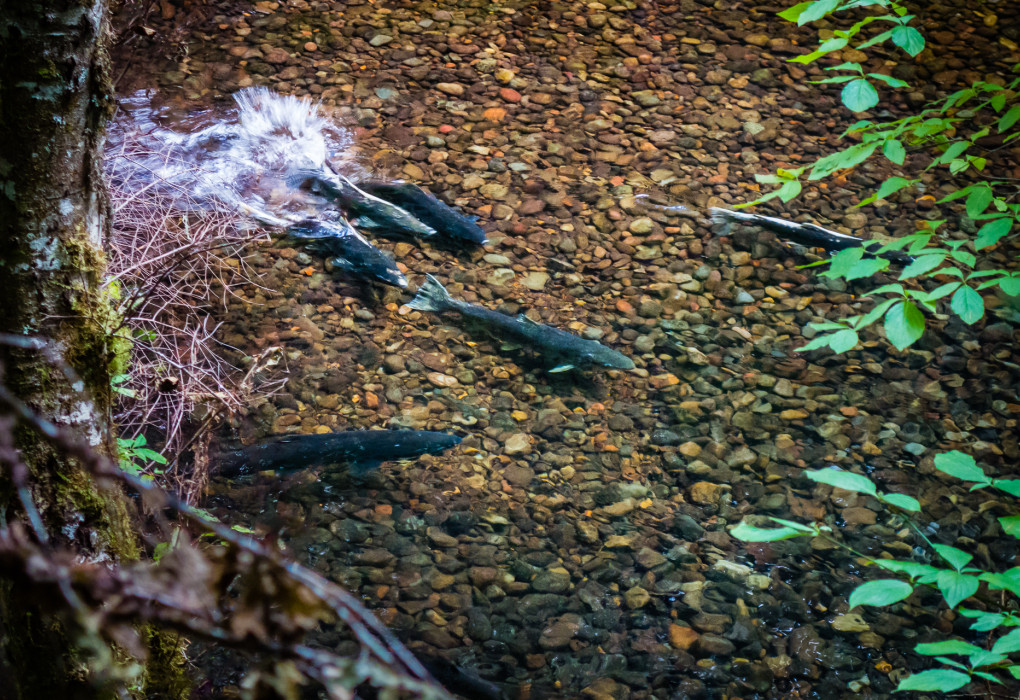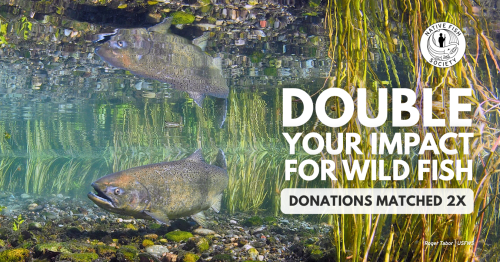Reintroduction Hopes: What New Research Does (and Doesn’t) Tell Us about Hatchery Reintroduction Programs
A recent OSU-led study about hatchery reintroduction in the South Fork McKenzie has garnered quite a bit of attention from both native fish advocacy groups, such as NFS, as well as pro-hatchery groups. However, the results of the study have been misconstrued by many, so we want to provide some clarity.
What was the purpose of the study?
The goal of this study was to determine if the offspring of hatchery spring Chinook that had been reintroduced above Cougar Dam in the South Fork McKenzie had higher fitness than the Chinook that had been spawned and reared in a hatchery.
A reminder of what fitness means in this context
Evolutionary fitness is a measure of an individual’s reproductive success relative to others in the population. For example, if a Chinook is harvested in the ocean before it can spawn, it has a fitness of zero. A Chinook that leaves behind 1000 offspring has higher fitness than one that leaves behind 100 offspring.
What did the authors measure?
The design of Cougar Dam requires the use of a trap-and-haul operation to transport returning adult fish above the dam. Previously, the dam excluded Chinook from valuable spawning habitat in the upper South Fork, but the newly established trap-and-haul scheme allowed the researchers easy access to assess the success of the reintroduction program.
The study authors used fin clips taken from the returning adults to assign each fish to parents that were hatchery origin spawner (HOS), natural origin spawner (NOS), or the offspring of HOS spawners (F1). By assessing the number of adult offspring that each parent group produced, they were able to compare the fitness levels of those three categories of fish.
The results
It turns out that the F1 fish–those who descended from two hatchery fish, but were spawned and reared in the wild–had similar fitness levels to the NOS fish. The fitness levels of both NOS fish and F1 fish were much higher than those of HOS fish.
What the results mean (and don’t mean)
This is good news, as it provides evidence that reintroduction programs can work to reestablish fish in rivers they had been previously removed from. But it also indicates that the success of these programs will potentially be held back by continued hatchery inputs, since the hatchery-raised fish had the lowest reproductive success. In practical terms, the results of this study suggests that using hatchery fish for 3-6 years (depending on the species) to fully “seed” the reintroduction area and then allowing natural reproduction to take over is likely to be the fastest route to recovery.
Some have taken the findings of this study to support ongoing hatchery stocking, but if anything, the results actually suggest that the most effective reintroduction program is one that ends.
The authors are also careful to warn that this study was only in one watershed, and that similar studies need to take place in other rivers before we can make any generalizations. Additionally, the authors point out that it is unclear how much hatchery genetics the “natural origin spawners” had. It’s possible that a good number of those NOS fish actually had hatchery parents themselves. If that is the case the “NOS” fish were actually F1 fish themselves, and truly wild-origin fish might have even higher fitness.
Full citation and link to the original research:
Dayan, D. I., Sard, N. M., Johnson, M. A., Fitzpatrick, C. K., Couture, R., & O'Malley, K. G. (2024). A single generation in the wild increases fitness for descendants of hatchery‐origin Chinook salmon (Oncorhynchus tshawytscha). Evolutionary Applications, 17(4), e13678.

